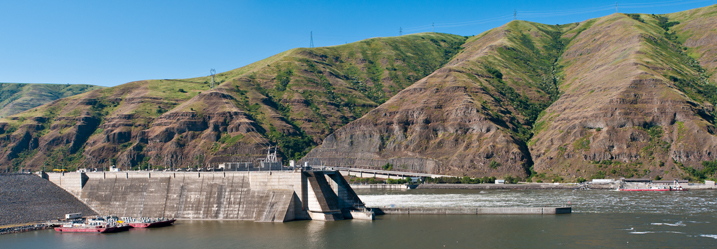About a third of the juvenile chinook and steelhead that migrate through the lower Snake and Columbia rivers are transported downriver by barge. The Corps collects the fish at juvenile bypass facilities at Lower Granite, Little Goose, Lower Monumental, and McNary dams and transports them to release sites below Bonneville Dam.
The survival rate for juvenile fish that are barged is close to 100 percent. In order to determine the best timing and condition for transporting fish, the Corps conducts research that compares the adult returns to the spawning grounds of transported fish versus fish that migrated in-river. In general, fish survive better migrating in-river in early April, but they survive better when transported during lower-flow conditions in mid to late May. Also, steelhead generally exhibit higher survival, compared to Chinook salmon, when transported during the spring migration.
The percentage of fish that are transported has declined significantly in recent years. NOAA Fisheries estimates that 34 percent of juvenile Snake River spring chinook and 38 percent of juvenile Snake River steelhead were barged in 2013.
Corps of Engineers fact sheet on barging

Fish barges at Lower Granite dam. Photo by Tony Grover, NW Power and Conservation Council.